Retirement Planning: Securities
Q2 2023 Quarter End Securities Update
Joseph Maas, Synergy Asset Management
Financial Markets
Equities. All three major indexes saw substantial gains in the second quarter of 2023, with the Nasdaq Composite up +12.81%, the S&P 500 up +8.3%, and the Dow Jones Industrial Average up +3.41%, as investors regain confidence in equity markets. With an economic slowdown on the horizon, equities seemed to ignore any bearishness in Q2, as all styles of equities rallied.
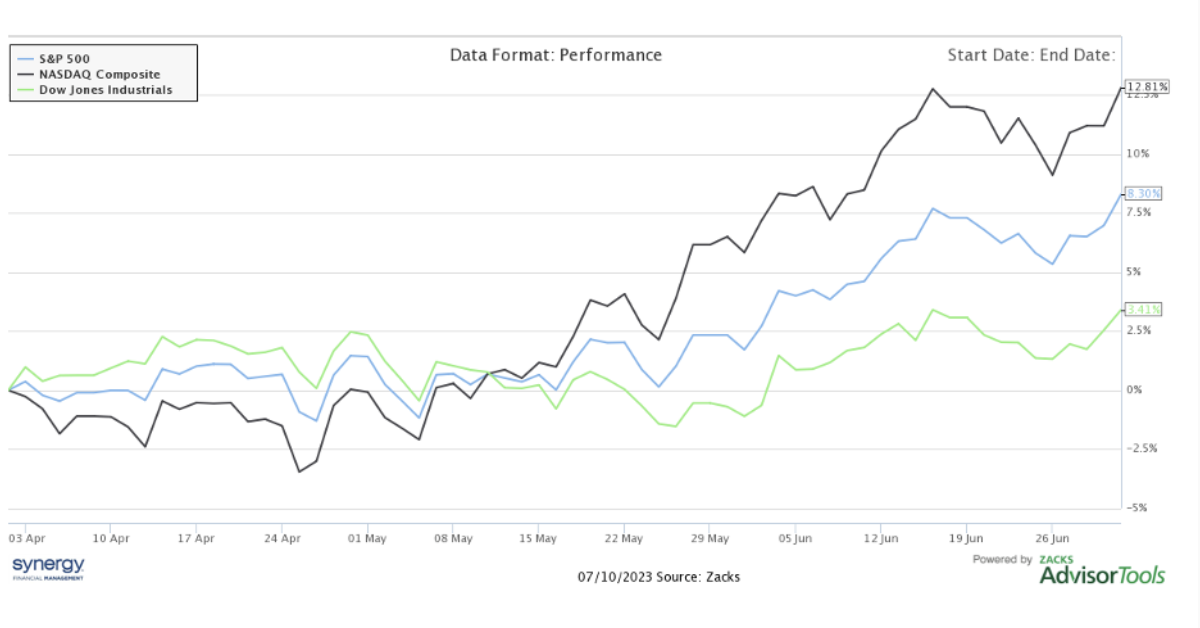
Similarly, with the Nasdaq’s strength in this quarter and on a year-to-date basis, growth stocks saw favorability, as the Fed inches closer and closer to the terminal rate in this rate hiking cycle. The Russell 1000 Growth Index was up +12.63% in Q2, while the Russell 1000 Value Index was only up +3.66% in the same time.
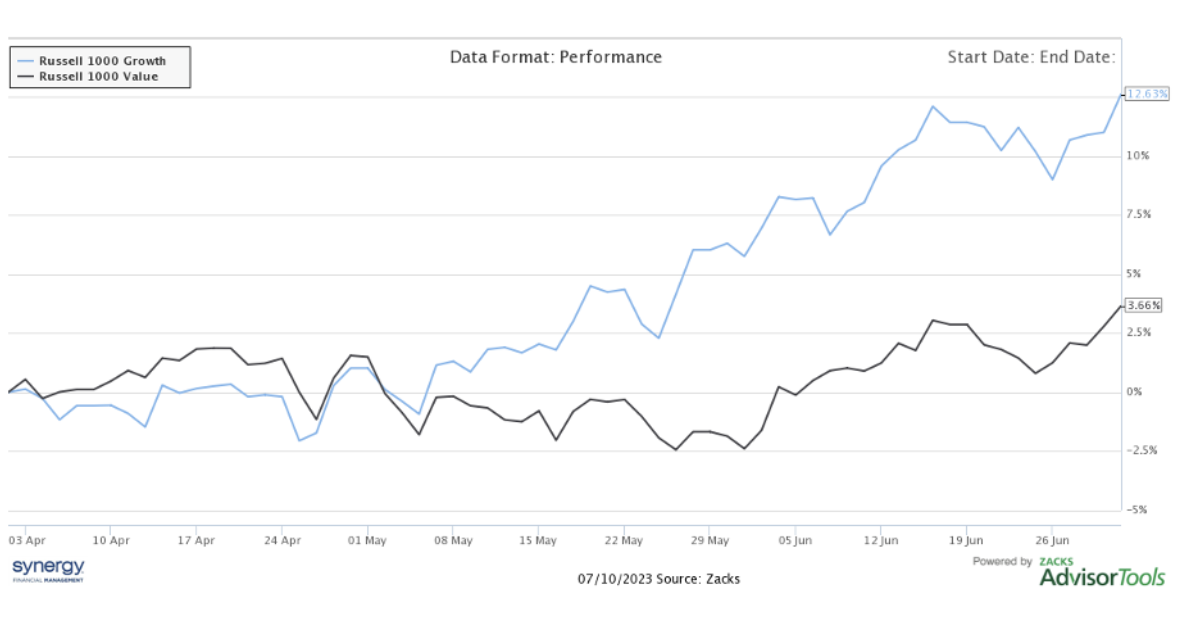
Fixed Income. Yields all along the US Treasury yield curve rose in Q2, as the 2-year yield gained the most (+19.95%) ending Q2 at 4.87%, while 3-month yields followed (+11.96%) ending Q2 at 5.43%. 10-year yields rose +9.48% in the quarter to end at 3.81%. This comes as the Fed hiked rates only once this quarter, a meek 0.25% in the May meeting.
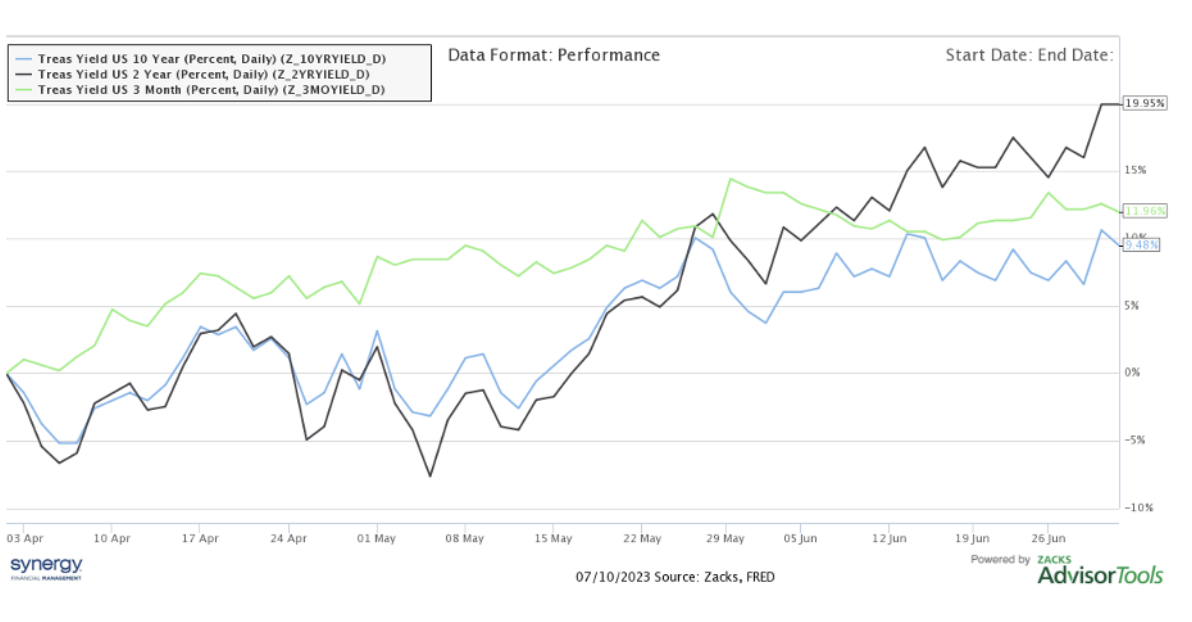
Beyond US Treasury yields, the Barclays Aggregate Bond Index (AGG) fell alongside higher rates, down a slight -1.7% in Q2. On a year-to-date basis though, the AGG was still up a positive +0.99% as of June 30th, as the worst of the hit to fixed income came in 2022.
As we near the end of this hiking cycle, with likely just one rate 25 basis point hike to go, bonds will offer mid-single digit returns in risk-free Treasuries and even higher returns in non-US Treasury bonds, something investors will surely consider.
Real Estate. Residential real estate remained resilient in the quarter as Spring homebuyers propped up the market, while REITs and commercial real estate have taken a hit. On one hand, the Case Shiller National Home Price Index, one of the best indicators of residential real estate markets, was only down -0.24% annually in April 2023, while the Green Street Commercial Property Price Index, an excellent indicator of CRE, was down -15.3% annually in April 2023.
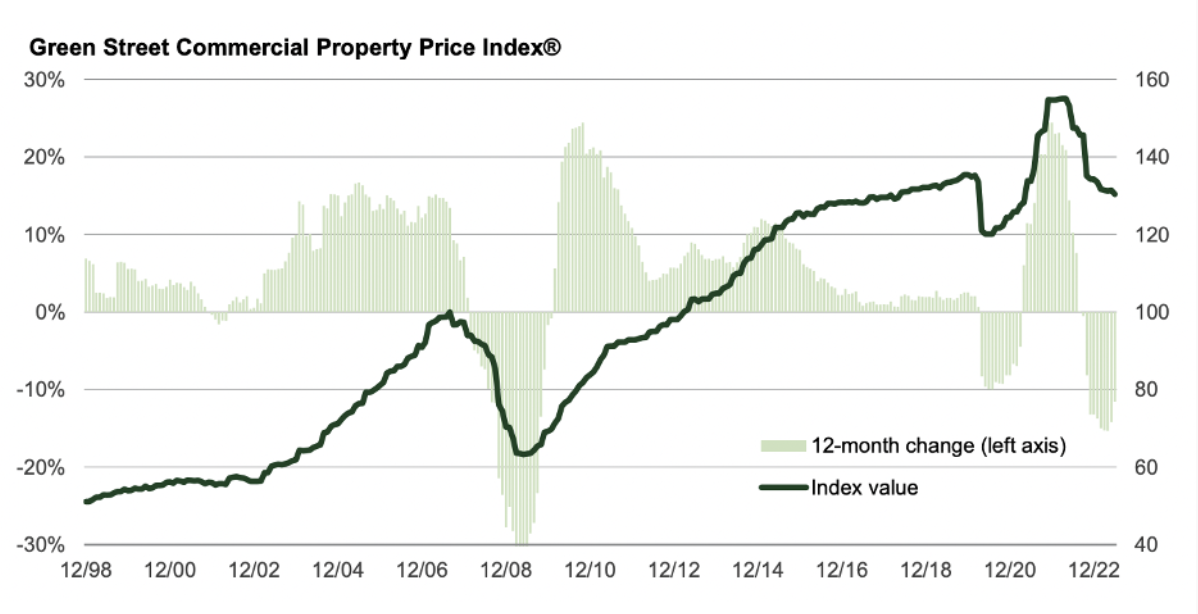
REITs have similarly underperformed in Q2, with Vanguard’s Real Estate Index (VNQ) up a slight +0.63% in the quarter yet is down -8.3% annually as of June 30th. Some opportunities remain in the REIT universe, something our Focused Real Estate Portfolio tactically capitalizes on. It will be interesting to see how real estate, across the residential, commercial, and REIT categories continues to perform as the lagging impacts of higher interest rates make their mark on the industry.
Geopolitical Events
Recession Worries Continue. US leading indicators largely worsened throughout Q2, with the LEI, or Leading Economic Index, as well as the 10 year-2-year US Treasury yield both demonstrating increasingly bearish signals. Q2 brought us the LEI for March, April, and May, in which the index continued its downward trajectory, in fact, the only times over the last 23 years where the LEI was at this low of a 6-month growth rate, were the Technology Bubble of the early 2000s, the Financial Crisis of 2008, and the most recent Pandemic recession.
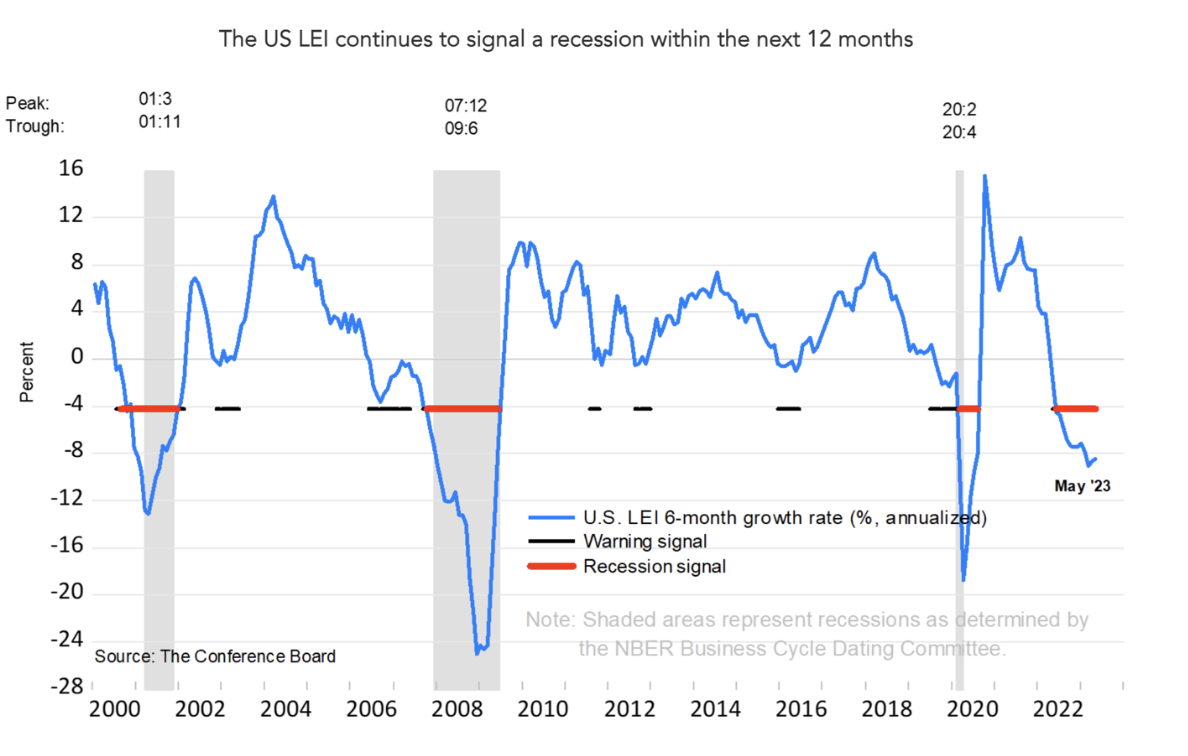
Similarly, the 10-2-year US Treasury Yield spread worsened in Q2, beginning at a negative, yet slimmer -0.58% and ending the quarter at nearly twice as wide of a spread at -1.06%. Historically, over the last 4+ decades, a yield curve this wide has always been followed by a recession.
Some of this can be attributed to the mechanics of raising rates so quickly on top of high inflation, all of which occurring after a once in a life pandemic, but at the same time, history does tend to provide accurate trends. Overall, Q2 brought a bit more bearish leading economic data, as economists and investors grapple with the idea of an economic slowdown and possibly a recession on the horizon.
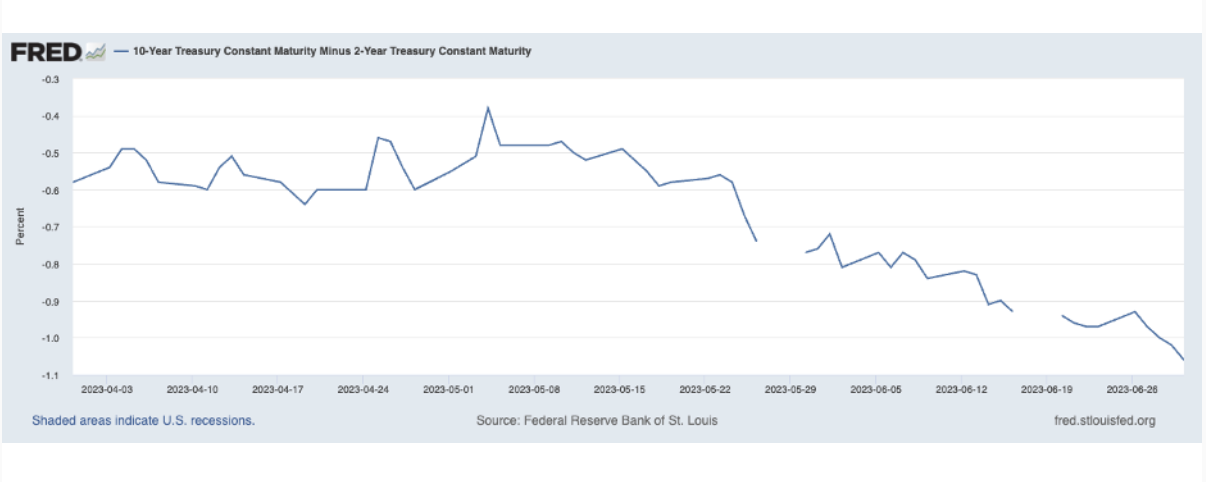
Global Conditions. Currently, the US remains in a neutral economy, but many developed nations are slipping into recession as they struggle to find a balance between sticky inflation and higher central bank interest rates. Most significantly, Q2 brought us data demonstrating that the Eurozone is in a technical recession right now, after posting negative GDP growth in Q4 of 2022 and Q1 of 2023.
Outside of the US and Europe, Argentina faces hyperinflation, with their May annual inflation at 114% and economists projecting as much as a 3% drop in GDP in 2023. Alternatively, Turkey faced 38.2% annual inflation in June and has yet to join the global rate hiking cycle. Besides these two outliers, global inflation rates are overwhelmingly in a downward trend, despite being in mid to high single digits still for many economies like the U.K. (8.7% YoY in May), Germany & Italy (6.4% YoY in June), South Africa (6.3% YoY in May), or Singapore (5.1% YoY in May).
The US economy has held up well compared to many other areas of the world, something to be grateful for, even in the face of bearish leading indicators and higher than 2% inflation. We look forward to continuing to monitor markets with a global perspective in the coming quarters.
Inflation
CPI, PPI, & PCE Continue Their Way Down. The second quarter of 2023 revealed inflationary data for March, April, and May with headline CPI ending the quarter at 4%, PPI ending the quarter at 1.1%, and PCE at 3.8%. On top of this downward trend, economists expect June inflation to continue its way down, as June CPI has already been released at a headline rate of 3%.
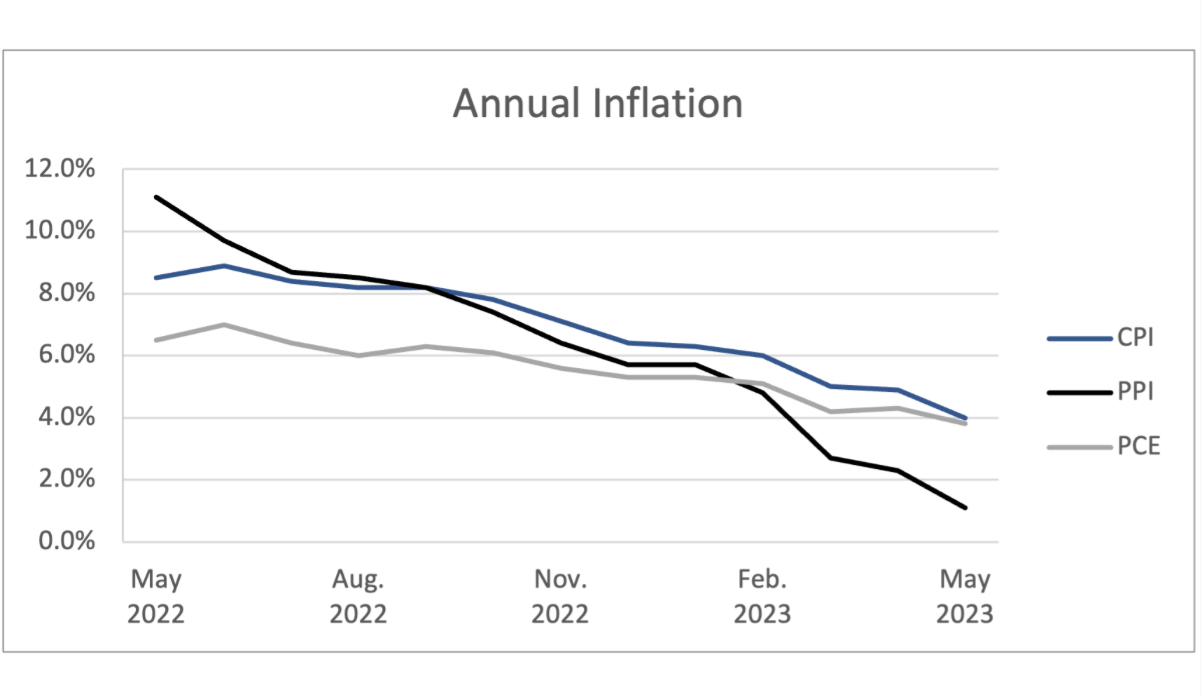
One encouraging sign of lower inflation stems from the PPI, the Producer Price Index, which is often a leading indicator of inflation, as producers no longer have to pass on higher costs to consumers. With a headline PPI of 1.1% in May, inflation is very well on its way to 2%, but may take another few quarters to actually hit the target. In all inflationary environments, the Synergy teams looks forward to actively managing against inflationary risk with an opportunistic perspective.
Corporate Earnings
Q1 Earnings Reported. First quarter earnings reported throughout the second quarter overwhelmingly beat earnings expectations, while bringing a modest year over year earnings growth rate of +3.0% in the S&P 500. Earnings growth varied largely by industry, as consumer discretionary, industrials, and energy led the gains, and real estate, health care, and communication services led the drawback.
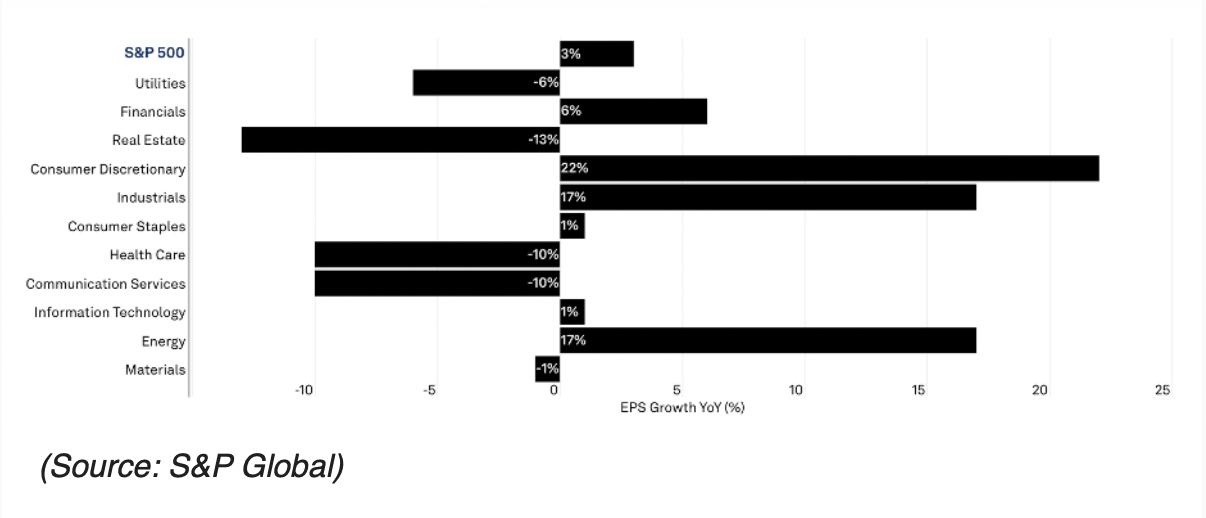
Q2 Earnings Preview. As this quarter ends, another earnings season begins with the large banks, including JP Morgan, Wells Fargo, and Citigroup kicking off Q2 earnings season on July 14th. Banking and financials will be one of the more interesting sectors, as the leftover impact of March’s multiple bank failures should appear.
For the S&P 500, based on forward company guidance, economic data, and analysts’ estimates, the index is expected to post a low single digit decline in earnings year over year in Q2, with performance varying largely by industry again.
Federal Reserve
Important Meetings in Q2. During this quarter, the Federal Open Market Committee met twice, once in May and once in June. May’s meeting brought a 25-basis point rate hike, bringing the target range to 5.0-5.25%, while the June meeting brought the most recent Summary of Economic Projections from the Fed members. More than half of the FOMC participants estimated that the Fed Funds Rate would end 2023 at or above 5.5%, insinuating at least one and possibly two rate hikes are still on the horizon.
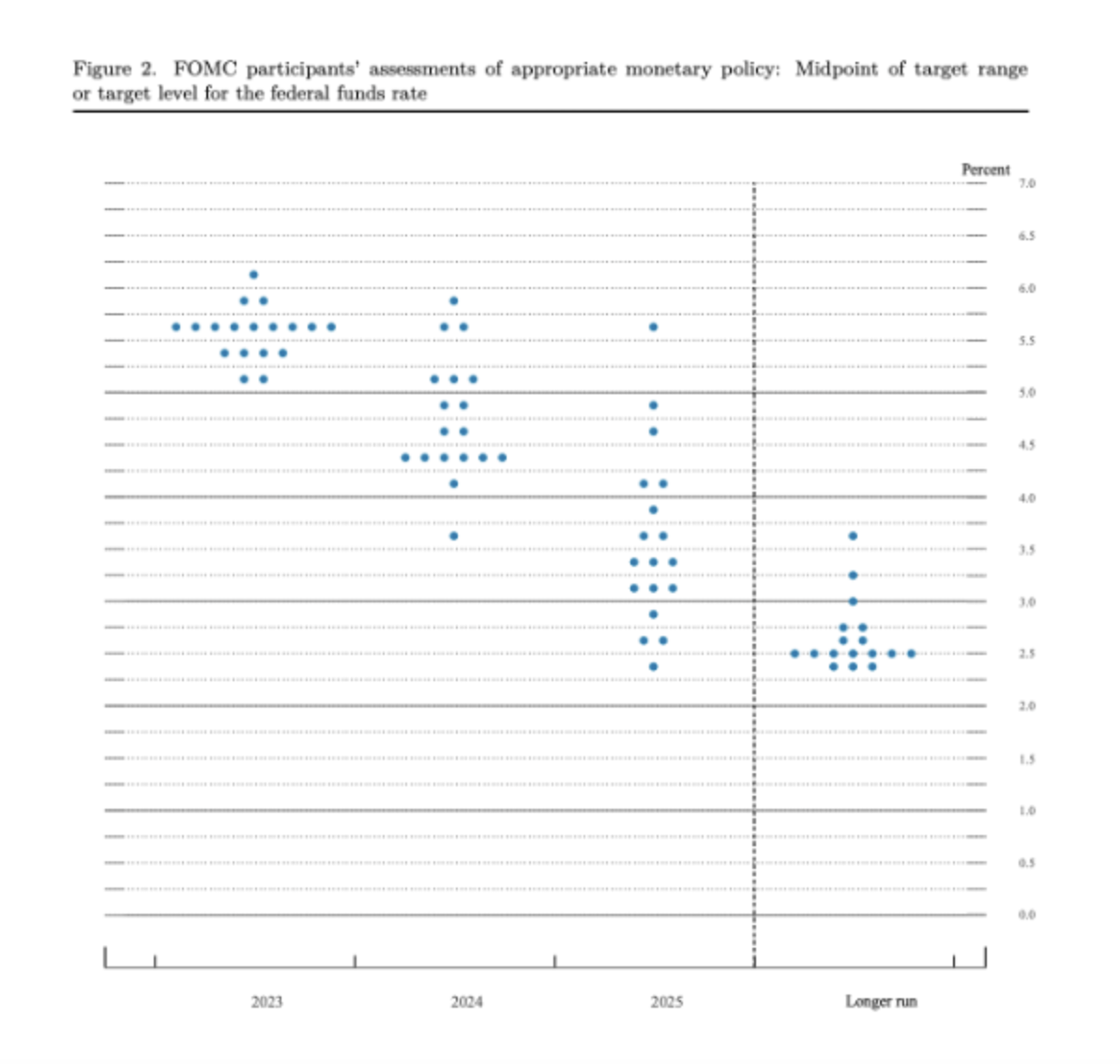
Interest Rates
Mortgage Rates. Mortgages rates rose slightly in the second quarter of 2023, even as home prices were generally flat. The average 30-year fixed mortgage rate begun the quarter at 6.32% and ended the quarter at 6.71%, marking a 6.2% increase. At the same time, average 15-year fixed mortgage rates rose 9% from 5.56% to 6.06% in the quarter. Mortgage rates should level off over the next quarter or two, as residential real estate may not hold as steady and home buying demand could cool off in the case of an economic slowdown. In any case, the residential real estate market will carry importance across our view of markets and within our focused portfolios.
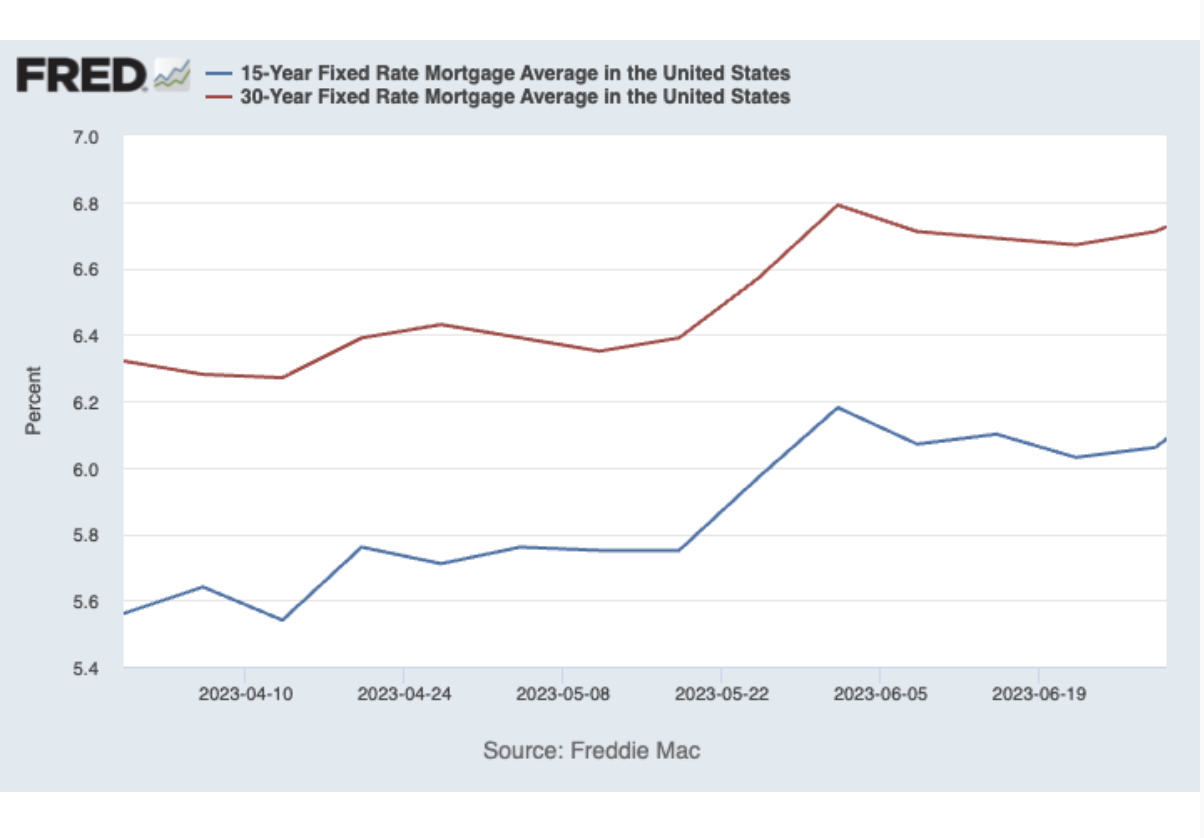
Our talented team is closely tracking with the financial markets, geopolitical events, inflation, corporate earnings, Federal Reserve updates, and interest rates as we maneuver this unique economic environment.
Thank you for your trust.
Lifetime Team &
Joe Maas, Synergy Asset Management
SERVICES WE OFFER RELATED TO THIS TOPIC
The information contained in this post is for general use and educational purposes only. However, we do offer specific services to our clients to help them implement the strategies mentioned above. For specific information and to determine if these services may be a good fit for you, please select any of the services listed below.
The 4x4 Financial Independence Plan ℠
Asset Protection
Retirement Planning
Securities
Tax Planning
Coaching and Consulting


EP 0012. The Three Generations of Annuities
The Financial Independence Now Podcast Hosted by Randy LuebkeIn Episode 12 of the Financial Independence Now podcast,...
11 Financial Tips to Make Caregiving Easier
Tax Planning Caregivers generally tend to their elderly/ disabled family members as a labor of love, but it can also...
EP 0011. Budgeting for Dummies
The Financial Independence Now Podcast Hosted by Randy LuebkeIn this episode of Financial Independence Now, host Randy...




